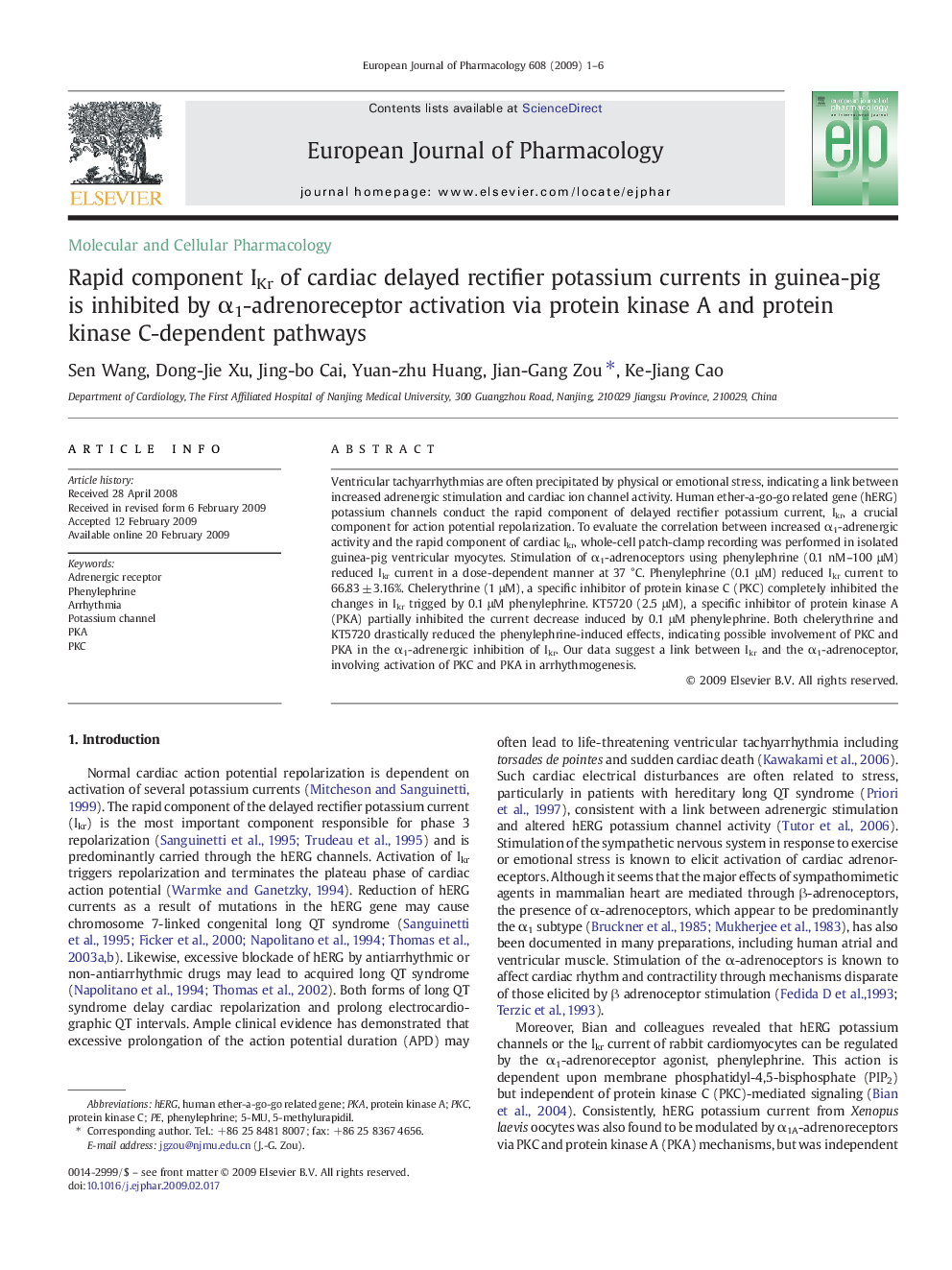| Article ID | Journal | Published Year | Pages | File Type |
|---|---|---|---|---|
| 2534543 | European Journal of Pharmacology | 2009 | 6 Pages |
Abstract
Ventricular tachyarrhythmias are often precipitated by physical or emotional stress, indicating a link between increased adrenergic stimulation and cardiac ion channel activity. Human ether-a-go-go related gene (hERG) potassium channels conduct the rapid component of delayed rectifier potassium current, Ikr, a crucial component for action potential repolarization. To evaluate the correlation between increased α1-adrenergic activity and the rapid component of cardiac Ikr, whole-cell patch-clamp recording was performed in isolated guinea-pig ventricular myocytes. Stimulation of α1-adrenoceptors using phenylephrine (0.1 nM-100 μM) reduced Ikr current in a dose-dependent manner at 37 °C. Phenylephrine (0.1 μM) reduced Ikr current to 66.83 ± 3.16%. Chelerythrine (1 μM), a specific inhibitor of protein kinase C (PKC) completely inhibited the changes in Ikr trigged by 0.1 μM phenylephrine. KT5720 (2.5 μM), a specific inhibitor of protein kinase A (PKA) partially inhibited the current decrease induced by 0.1 μM phenylephrine. Both chelerythrine and KT5720 drastically reduced the phenylephrine-induced effects, indicating possible involvement of PKC and PKA in the α1-adrenergic inhibition of Ikr. Our data suggest a link between Ikr and the α1-adrenoceptor, involving activation of PKC and PKA in arrhythmogenesis.
Keywords
Related Topics
Life Sciences
Neuroscience
Cellular and Molecular Neuroscience
Authors
Sen Wang, Dong-Jie Xu, Jing-bo Cai, Yuan-zhu Huang, Jian-Gang Zou, Ke-Jiang Cao,
